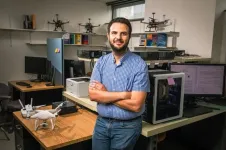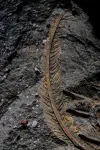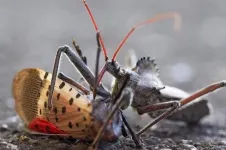(Press-News.org) A new large-scale study co-led by UCLA Health Jonsson Comprehensive Cancer Center investigators provides the strongest evidence yet that a shorter, standard-dose course radiation treatment is just as effective as conventional radiotherapy for prostate cancer, without compromising the safety of patients.
The shorter approach, known as isodose moderately hypofractionated radiotherapy (MHFRT), delivers slightly higher doses of radiation per session, allowing the total treatment duration to be over four to five weeks instead of seven to eight weeks.
According to the study, patients who received this type of MHFRT had the same cancer control rates as those who received conventional radiotherapy. Additionally, the risk of long-term side effects affecting the bladder and intestines was no higher with MHFRT, confirming its safety.
The findings were published in The Lancet Oncology.
“We believe these data strongly support that isodose MHFRT should become the preferred standard of care MHFRT regimen for prostate cancer,” said Dr. Amar Kishan, executive vice chair of radiation oncology at the David Geffen School of Medicine at UCLA and co-first author of the study. “More broadly, there appears to be little reason to consider conventional radiotherapy over MHFRT for the types of patients enrolled in these trials given these results.”
While MHFRT is now the most commonly used radiotherapy regimen for prostate cancer, concerns remain about whether delivering a higher daily dose increases the risk of urinary and bowel issues, such urinary incontinence, chronic diarrhea and rectal bleeding.
To better understand whether there might be an increased risk of toxicity with the delivery of a higher dose per day of radiation, Kishan and the team of researchers examined data from more than 5,800 patients across seven randomized clinical trials comparing standard therapy with two different MHFRT approaches: isodose MHFRT, which maintains the total radiation dose at a level similar to standard therapy, and dose-escalated MHFRT, which increases the total dose in hopes of enhancing tumor control.
The analysis found patients who received isodose MHFRT (60 Gy in 20 fractions) had similar cancer control and side effects compared to those receiving conventional radiation therapy, with no significant difference in the five-year progression-free survival (77.0% for MHFRT vs. 75.6% for conventional).
Patients who received higher dose-escalated MHFRT did not improve cancer control when compared to those receiving standard doses, with five-year progression-free survival rates being identical to conventional therapy (82.7% in both groups). Patient-reported outcomes also showed significantly higher gastrointestinal side effects (7.2% vs. 4.9%), particularly bowel issues.
While dose-escalated MHFRT was expected to improve outcomes, the data showed no additional benefit in cancer control and a higher risk of gastrointestinal side effects, noted Kishan. This underscores the advantage of isodose MHFRT, which provides the same effectiveness as conventional therapy without increasing toxicity.
“These findings reinforce isodose MHFRT as the standard of care, offering the same cancer control as conventional treatment but with fewer side effects than dose-escalated MHFRT,” said Kishan, who is also a researcher in the UCLA Health Jonsson Comprehensive Cancer Center. “Patients can safely opt for a shorter treatment schedule without compromising their outcomes, ensuring they receive effective care with fewer visits and minimal added risk. Less time in treatment can still mean the best possible results.”
The study’s other co-first author is Yilun Sun from case Western Reserve University School of Medicine. Other UCLA authors are Dr. Michael Steinberg, Dr. Luca Valle, Dr. John Nikitas, and Dr. Tahmineh Romero Kalbasi. A full list of authors can be found in the study.
The study was supported in part by grants from the Department of Defense and the National Institutes of Health.
END
Study confirms safety and efficacy of higher-dose-per-day radiation for early-stage prostate cancer
Shorter, higher-dose-per-day radiation courses should be the standard radiation regimen for men with localized disease
2025-03-18
ELSE PRESS RELEASES FROM THIS DATE:
Virginia Tech researchers publish revolutionary blueprint to fuse wireless technologies and AI
2025-03-18
There’s a major difference between humans and current artificial intelligence (AI) capabilities: common sense. According to a new visionary paper by Walid Saad, professor in the College of Engineering and the Next-G Wireless Lead at the Virginia Tech Innovation Campus, a true revolution in wireless technologies is only possible through endowing the system with the next generation of AI that can think, imagine, and plan akin to humans.
Published in the Proceedings of the IEEE Journal's Special Issue on the Road to 6G with Ph.D. student Omar Hashash and postdoctoral associate Christo Thomas, the paper's findings suggest:
The missing link in the wireless revolution is ...
Illinois study: Extreme heat impacts dairy production, small farms most vulnerable
2025-03-18
URBANA, Ill. – Livestock agriculture is bearing the cost of extreme weather events. A new study from the University of Illinois Urbana-Champaign explores how heat stress affects U.S. dairy production, finding that high heat and humidity lead to a 1% decline in annual milk yield. Small farms are hit harder than large farms, which may be able to mitigate some of the effects through management strategies.
“Cows are mammals like us, and they experience heat stress just like we do. When cows are exposed to extreme heat, it can have a range of negative physical effects. There is an increased risk of infection, restlessness, and decreased ...
Continuous glucose monitors can optimize diabetic ketoacidosis management
2025-03-18
Diabetic ketoacidosis is a common severe complication of diabetes, which develops when the body can’t produce enough insulin.
During DKA the body starts breaking down fat, causing a buildup of acids in the bloodstream. The symptoms often include thirst, weakness, nausea and confusion.
Concerningly, this condition accounts for more than 500,000 hospital days per year, often in the intensive care unit, with an estimated cost of $2.4 billion.
In a study, published in CHEST Critical Care, University of Michigan researchers show that using continuous glucose monitors can help measure glucose accurately during DKA and ...
Time is not the driving influence of forest carbon storage, U-M study finds
2025-03-18
Figures and photos
It is commonly assumed that as forest ecosystems age, they accumulate and store, or "sequester," more carbon.
A new study based at the University of Michigan Biological Station untangled carbon cycling over two centuries and found that it's more nuanced than that.
The synergistic effects of forest structure, the composition of the tree and fungal communities, and soil biogeochemical processes have more influence on how much carbon is being sequestered above and below ground than previously thought.
The ...
Adopting zero-emission trucks and buses could save lives, prevent asthma in Illinois
2025-03-18
Guided by the lived experiences of community partners, Northwestern University scientists have simulated the effects of zero-emission vehicle (ZEV) adoption on future air quality for the greater Chicago area.
The results were published today (March 18) in the journal Frontiers of Earth Science.
Motivated by California’s Advanced Clean Trucks (ACT) policy, Neighbors for an Equitable Transition to Zero-Emissions (NET-Z) Illinois members partnered with Northwestern researchers to explore how a similar strategy might play out in Cook County and the surrounding areas.
To develop a model that more realistically simulates ...
New fossil discovery reveals how volcanic deposits can preserve the microscopic details of animal tissues
2025-03-18
An analysis of a 30,000-year-old fossil vulture from Central Italy has revealed for the first time that volcanic rock can preserve microscopic details in feathers - the first ever record of such a preservation.
An international team, led by Dr Valentina Rossi (University College Cork, Ireland), discovered a new mode of preservation of soft tissues that can occur when animals are buried in ash-rich volcanic sediments.
The new research, published in the scientific journal Geology, reveals that the feathers ...
New chromosome barcode system unveils genetic secrets of alfalfa
2025-03-18
In a recent study, scientists have developed a revolutionary chromosome identification system for alfalfa, one of the world's most economically vital forage crops. Leveraging an advanced Oligo-fluorescence in situ hybridization (FISH) barcode technique, researchers successfully mapped and identified all chromosomes in alfalfa, uncovering unexpected chromosomal anomalies, including aneuploidy and large segment deletions. This breakthrough not only enhances molecular cytogenetics but also sheds light on the genetic stability ...
Reusing old oil and gas wells may offer green energy storage solution
2025-03-18
UNIVERSITY PARK, Pa. — Moving from fossil fuels to renewable energy sources like wind and solar will require better ways to store energy for use when the sun is not shining or the wind is not blowing. A new study by researchers at Penn State found that taking advantage of natural geothermal heat in depleted oil and gas wells can improve the efficiency of one proposed energy storage solution: compressed-air energy storage (CAES).
The researchers recently published their findings in the Journal of Energy Storage.
CAES plants compress air and store it underground when energy demand is low and then extract the air to create electricity when demand ...
Natural insect predators may serve as allies in spotted lanternfly battle
2025-03-18
UNIVERSITY PARK, Pa. — Insect predators found in the United States could help keep spotted lanternfly populations in check while potentially reducing reliance on chemical control methods, according to a new study conducted by researchers at Penn State.
Led by entomologists in Penn State’s College of Agricultural Sciences and published in Arthropod-Plant Interactions, the study evaluated the effectiveness of various insects in potentially controlling spotted lanternfly populations. The invasive pest, first detected in the United States in 2014, has spread across at least 18 states, causing significant damage to vineyards, orchards ...
Rice research team creates universal RNA barcoding system for tracking gene transfer in bacteria
2025-03-18
In the microscopic world of bacteria, gene transfer is a powerful mechanism that can alter cellular function, drive antibiotic resistance and even shape entire ecosystems. Now an interdisciplinary group of researchers at Rice University has developed an innovative RNA “barcoding” method to track these genetic exchanges in microbial communities, providing new insights into how genes move across species. The findings were recently published in Nature Biotechnology.
“We’ve long known that bacteria swap genes in ways that impact human health, biotechnology and environmental stability,” said James Chappell, associate professor of biosciences ...
LAST 30 PRESS RELEASES:
Why nail-biting, procrastination and other self-sabotaging behaviors are rooted in survival instincts
Regional variations in mechanical properties of porcine leptomeninges
Artificial empathy in therapy and healthcare: advancements in interpersonal interaction technologies
Why some brains switch gears more efficiently than others
UVA’s Jundong Li wins ICDM’S 2025 Tao Li Award for data mining, machine learning
UVA’s low-power, high-performance computer power player Mircea Stan earns National Academy of Inventors fellowship
Not playing by the rules: USU researcher explores filamentous algae dynamics in rivers
Do our body clocks influence our risk of dementia?
Anthropologists offer new evidence of bipedalism in long-debated fossil discovery
Safer receipt paper from wood
Dosage-sensitive genes suggest no whole-genome duplications in ancestral angiosperm
First ancient human herpesvirus genomes document their deep history with humans
Why Some Bacteria Survive Antibiotics and How to Stop Them - New study reveals that bacteria can survive antibiotic treatment through two fundamentally different “shutdown modes”
UCLA study links scar healing to dangerous placenta condition
CHANGE-seq-BE finds off-target changes in the genome from base editors
The Journal of Nuclear Medicine Ahead-of-Print Tip Sheet: January 2, 2026
Delayed or absent first dose of measles, mumps, and rubella vaccination
Trends in US preterm birth rates by household income and race and ethnicity
Study identifies potential biomarker linked to progression and brain inflammation in multiple sclerosis
Many mothers in Norway do not show up for postnatal check-ups
Researchers want to find out why quick clay is so unstable
Superradiant spins show teamwork at the quantum scale
Cleveland Clinic Research links tumor bacteria to immunotherapy resistance in head and neck cancer
First Editorial of 2026: Resisting AI slop
Joint ground- and space-based observations reveal Saturn-mass rogue planet
Inheritable genetic variant offers protection against blood cancer risk and progression
Pigs settled Pacific islands alongside early human voyagers
A Coral reef’s daily pulse reshapes microbes in surrounding waters
EAST Tokamak experiments exceed plasma density limit, offering new approach to fusion ignition
Groundbreaking discovery reveals Africa’s oldest cremation pyre and complex ritual practices
[Press-News.org] Study confirms safety and efficacy of higher-dose-per-day radiation for early-stage prostate cancerShorter, higher-dose-per-day radiation courses should be the standard radiation regimen for men with localized disease





